Despite overwhelming votes to cut off funding for ACORN from both Democrats and Republicans in the US Congress in September 2009, there is a real question as to whether such measures are effective or even sincere.
The ACORN scandal regarding the prostitution of minors exposed by young reporters Hannah Giles and Kenneth O’Keefe and publicized by Glenn Beck of Fox News embarrassed US legislators of both parties — leading to a bi-partisan, bi-cameral vote to cut of ACORN funding.
The Census Bureau and the Internal Revenue Service have also made noises about cutting ties with ACORN.
However, all this is likely just for show — fake outrage to fool the masses.
Today’s news is that ACORN is alive and well — and is suing the young journalists that revealed how ACORN conducted business.
ACORN may be immortal. It seems likely that it can’t effectively be de-funded.
ACORN is both Chimera and Hydra
ACORN is not an ordinary organization, according to a staff report by the Congressional Committee on Oversight and Government Reform.
Because of the way it operates, ACORN is able to declare on its website:
The Association of Community Organizations for Reform Now does not apply for nor does it receive any federal grants.
So, if that is true, what is all the fuss about?
Like a mythical Chimera, ACORN seems to have many faces and forms. It seems to be supremely deceptive, with many names and aliases. It may be difficult, almost impossible, to kill.
|
|
|
|
ACORN can change its shape at will ...
|
|
|
|
|
ACORN’s headquarters appear to be located in a locked house in New Orleans. Its business is said to be carried out by a network of 361 front corporations, many without regular officers or directors.
According to the Congressional Report, money is shunted from corporation to corporation as the need arises — without proper bookkeeping or discernible explanation.
The Congressional report “Is ACORN Intentionally Structured as a Criminal Enterprise?”, characterized ACORN activity as follows:
By intentionally blurring the legal distinctions between 361 tax-exempt and non-exempt entities, ACORN diverts taxpayer and tax-exempt monies into partisan political activities. Since 1994, more than $53 million in federal funds have been pumped into ACORN, and under the Obama administration, ACORN stands to receive a whopping $8.5 billion in available stimulus funds.
Operationally, ACORN is a shell game played in 120 cities, 43 states and the District of Columbia through a complex structure designed to conceal illegal activities, to use taxpayer and tax-exempt dollars for partisan political purposes, and to distract investigators. Structurally, ACORN is a chess game in which senior management is shielded from accountability by multiple layers of volunteers and compensated employees who serve as pawns to take the fall for every bad act.
It is not easy to define what constitutes an “ACORN” company.
Here are the cryptic or innocuous names of just some of the 361 entities under which it operates (according to the Congressional report):
|
|
|
|
Cut one of ACORN's heads; two new ones grow
|
|
|
|
|
Project Vote; MHANY; AISJ; KABF; AGAPE; ALERT; HOTROC; Floridians for All Miami; Peace and Social Justice Center of South Central Kansas; Edison Neighborhood Center; Lagrange Village Council; Arkansas Community Housing Corporation; Desert Rose Homes; Mutual Housing Association of New York; New Orleans Community Housing Organization; Broad Street Corporation; Elysian Fields Corporation; Dumont Avenue Housing Development Fund; Elysian Fields Partnership; Fifteenth Street Corporation; Development Fund Corporation; New York Organizing and Support Center; 5301 McDougall Corporation; Sixth Avenue Corporation; Greenwell Springs Corporation; Working Families Association, Inc.; Wal-Mart Workers Association, Inc.; Orleans Criminal Sheriffs; American Institute for Social Justice, Inc.; Association for Rights of Citizens, Inc.; American Environmental Justice Project, Inc.; Missouri Tax Justice Research Project, Inc.; Connecticut Working Families; Democracy for America; Hammurabi Fund, Inc.; Volunteers for America, Inc.; Citizens Consulting, Inc.; Living Wage Resource Center; and so forth and so on …
Like the mythical Hydra, ACORN seems to have myriad heads that if cut off, will grow back in duplicate. ACORN can form companies with convenient, non-ACORN names, faster than lawmakers can write provisions cutting off funds.
Here is a conundrum for readers that are students of law:
How would you write a provision that defines ACORN so as to assure that funding will not go to this organization?
The Congressional reports suggests that ACORN is not a regular organization at all, but rather a loose, ill-defined network of radical individuals — revolutionaries organized to take power and effect social change in the United States. Unlike the Mafia, there is no Capo de tutti capi — or if there is, he or she has been hidden so far.
Without precise boundaries, ACORN blends imperceptibly into like-minded organizations, like SEIU, the Tides Foundation, the ACLU, and others. Money and personnel can flow between entities to meet the exigencies of the moment.
No federal money is budgeted specifically to ACORN
Although the stimulus package that the Obama administration rammed through Congress contains $8.5 billion in potential funds for ACORN, it is important to note that the name of ACORN appears nowhere in the legislation.
Furthermore, some of this money may go to legitimate organizations, not associated with ACORN or sharing in its agenda in any way — but, then, no one can say for sure.
|
|
|
|
Secretary Donovan: Obama's man in HUD
|
|
|
|
|
Finally, the stimulus money is not the only source of funds for ACORN. The organization gets grants and donations from tax exempt entities (like the Tides Foundation), receives contributions directly from donors, and receives contractual and other payments from groups that support its goals. (Much of this money is tax deductible — meaning that some other less fortunate citizens will have to pay more taxes to cover the tax deductible contributions that are directed to ACORN.)
However, the $8.5 billion stimulus money (cited in the above-mentioned Congressional report) is a particularly rich lode that, it would seem, the ACORN people know how to channel to ACORN coffers.
Most of this money is distributed, directly or indirectly through grant programs administered by the US Department of Housing and Urban Development (HUD), under Secretary Shaun Donovan.
Secretary Donovan has worked with Bertha Lewis, ACORN CEO, in his position as New York City Housing Preservation and Development Commissioner.
ACORN people have long had access to HUD officials at the national, state, and local level, and, therefore, to HUD grant money in the stimulus bill.
Its all about access and knowing how the grant system works.
ACORN is just the fruit of the corrupt HUD tree
Ever since the Department of Housing and Urban Development (HUD) was founded in 1965 by President Lyndon Johnson as part of the “War on Poverty”, it has been an equal opportunity bi-partisan source of scandal and corruption.
|
|
|
|
HUD: Bad apples, "rotten to the core"
|
|
|
|
|
HUD oversees Fannie Mae, Freddie Mac, Ginnie Mae, the Federal Housing Administration, and the Community Development Block Grants off which ACORN feeds.
It is the government department most directly responsible for the sub-prime mortgage scandal that led to the Crash of 2008.
According to the government website:
HUD’s mission is to increase homeownership, support community development and increase access to affordable housing free from discrimination.
It does this, primarily, by taking money from some citizens and giving it to others, by encouraging banks to make inappropriate loans, by interfering with normal supply and demand in housing markets, and by acting as a slush fund for politicians of both parties.
Politicians love HUD and HUD grant programs because it affords them a way to pay off favored constituents with cash grants extracted by taxes on citizens in some other, less favored part of the country.
The flow of HUD grant funds is basically quite simple:
- Congress approves a budget for grant money to be distributed by HUD. (The 2009 “Stimulus Act” had $8.5 billion set aside for grants to be channeled through HUD for which ACORN and similar groups might be eligible.)
- HUD regulators and staff establish a highly complicated, technical set of rules and procedures as to how one can get one’s hands on this money. There are check lists, conditions, and documents to be filled out. (ACORN staffers and their lawyers are experts in HUD grants.)
- If HUD officials don’t manage to shove these grant funds out of the door, they may not get promoted next year. Their job description is to approve grants, according to the rules. Anyone who knows the rules can get the money — especially when they have Congressional contacts and know HUD officials personally. (Certain ACORN staffers have this capability to a high degree.)
- Once the money is out the door and the perfunctory reports, audits, and follow-ups performed, everybody is home free! (except the US taxpayers).
Since appropriations for HUD grants are not targeted to specific entities, but rather specified in terms of rules and abstract conditions, anyone who knows how to play the game can get the money. If Congress passes a law saying “no grants to ACORN”, this means little, because the ACORN people can simply incorporate an entity with no visible ties to ACORN as the beneficiary of the grant. Later, when no one is looking, the money can be shifted elsewhere. HUD has a reputation for poor oversight of the funds it disburses.
Therefore, the only way to stop ACORN from getting money from the stimulus bill would be:
- Abolish all grant monies in the stimulus act; and
- Abolish HUD.
Neither of these things is likely to happen, so despite posturing by Congress to “cut off funds to ACORN”, those on the inside know that this is not about to happen any time soon.
In fact, one might say the HUD is the mother of ACORN. Here is what HUD has posted on its official government website about “community organizers”:
Being a community organizer is hard work - but it is so worthwhile! Whether you’re just beginning or you’ve already graduated to nonprofit status, we have something for you.
Why HUD is immortal
In order to explain why HUD is immortal, we need to look at a simple HUD block grant project: a sidewalk in Sandy, Utah.
|
|
|
|
A HUD project: Sidewalk in Sandy, Utah
|
|
|
|
|
This picture, taken from the HUD website, shows the sidewalk in question.
Obviously, this is not a large scale project or anything that appears to be of vital national interest. Nor does it seem to be a project that is helping the poor and homeless — unless, of course, they plan to sleep on the sidewalk.
Sandy, Utah is a small, upscale community that is a suburb of Salt Lake City. Its politicians are primarily Republicans. It is a well-run city, winning the Distinguished Budget Presentation Award from the Government Finance Officers Association in 2008.
|
|
|
|
The beautiful Sandy, Utah City Hall
|
|
|
|
|
Sixty percent of Sandy voters are registered Republicans. Less than 1% of the population are black. The dominant religion is Mormon. The crime rate is well below the national average. The city is growing rapidly.
The median household income in Sandy, in 2007, was $72, 699, compared to $55,109 in the State of Utah.
Why would a conservative, well-off and well-run community of conservative Mormons choose to accept a hand-out from the Federal government to build a sidewalk that they could well afford to build themselves?
The answer is simple. Politicians like to do favors for people that will vote for them. If the Federal government will give them money to finance these favors, why not take it?
In other words, the nice people of Sandy, Utah have been corrupted by Federal handouts from HUD. The ordinary voter doesn’t understand what is going on, barely aware of the purpose of HUD. However, elected politicians who intend to be re-elected understand very well.
This is the reason that HUD is immortal and why ACORN is protected. Obviously, when Congress voted to cut off funds for ACORN, the politicians understood full well that this was a sham to fool the people. You can’t kill ACORN without killing HUD and block grants — which professional politicians will never do
Barack Obama and ACORN
President Barack Obama has been closely associated with ACORN for years. Although the Obama administration has tried to deny the President’s close ties to ACORN that go back across his entire career, the Internet provides hundreds of sources citing Obama’s own admission of his intimate relationship with what a Congressional report now calls a criminal organization.
There are pictures of Obama as a “community organizer”, contemporaneous testimony of fellow ACORN workers of Obama’s involvement and the President’s own writings and speeches, admitting that he was “smack dab in the middle of it”, as in his 2007 speech to his colleagues at ACORN:
“I’ve been fighting alongside of Acorn on issues you care about my entire career. Even before I was an elected official, when I ran Project Vote in Illinois, Acorn was smack dab in the middle of it, and we appreciate your work.”
The historical record indicates that without the support of ACORN, Barack Obama might not have ever made it to the White House.
Not only are Congressional Democrats and Republicans unlikely to ever take any real action against ACORN, but Obama himself will continue to provide support, ostensible and hidden, to his fellow “community organizers”.
ACORN lives on …
Photo credits: “2020-12-02 Rotten to the core ..” by Henning on Flickr.
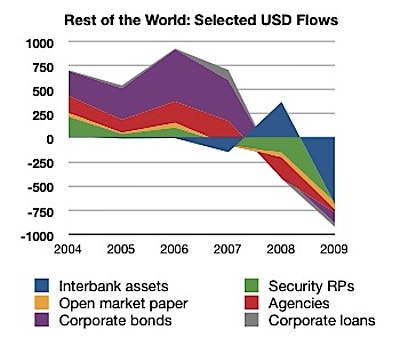
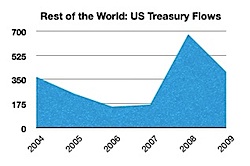
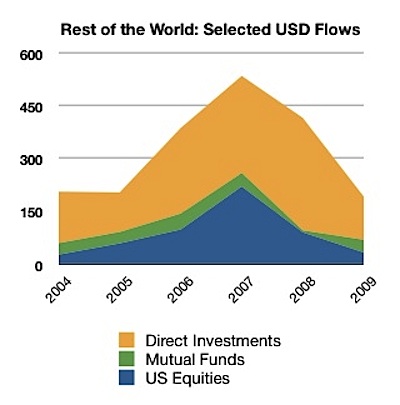


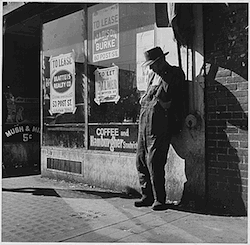
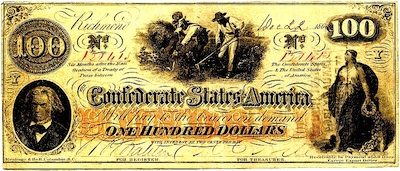


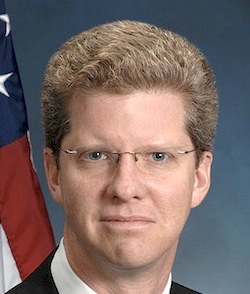



 Click these icons to email articles to friends.
Click these icons to email articles to friends.